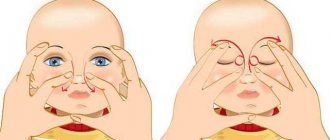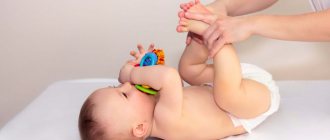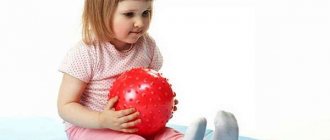39778
5
In this article:
- Massage technique
- Video on how to massage the lacrimal duct
Tearing helps small children with the normal functioning of the eyes, moisturizing them to the required extent. With the help of tears, dust particles and other small particles that can injure a child’s sensitive cornea are washed away.
Causes of canal blockage:
- congenital blockage of mucous plug;
- infectious eye diseases;
- inflammatory eye diseases;
- mechanical injuries;
- developmental anomalies.
Symptoms:
- purulent and mucous discharge from the eyes;
- inflammation of the lacrimal sac;
- swelling in the area of the lacrimal glands;
- redness of the eyes.
All of the above symptoms can be eliminated by eye massage in a newborn. Parents often encounter a disease such as dacryocystitis in newborns; massage in this case is a prerequisite.
Massage of the lacrimal canal in newborns is a conservative treatment method and, often, when performed correctly, eliminates blockage of the canal itself.
Not every mother knows how to massage the eyes of a newborn. But you can easily learn it at home.
If a newborn’s eye is festering, massage is carried out in the most sterile conditions possible. Nails must be trimmed and sterile gloves may be used.
Immediately before starting the procedure, you must wash your hands thoroughly, preferably using a disinfectant. You need to prepare the baby, relax him, create a favorable atmosphere. The child should lie on a flat surface on his back. It is best if it is a changing table.
Eye massage for a newborn should be carried out with moderately strong and confident movements.
Why do you need a massage?
Tears cleanse the surface of the eye from dust and debris, and perform a protective, moisturizing and nourishing function. In addition, a baby cries to relieve nervous tension and calm down. The main part of tears is water (99%) and 1% inorganic substances. Thanks to the enzyme lysozyme, tear fluid has bactericidal properties.
The tear glands in babies produce secretion, but when the tear duct is blocked, it has nowhere to drain. Usually, tears, wetting the surface of the cornea, go through the lacrimal ducts into the lower nasal passage. When tear ducts are blocked, secretions accumulate and can become a source of infection.
The cause of inflammation of the nasolacrimal duct may be its blockage in a newborn baby. This disease is called dacryocystitis, and develops gradually during the first month of life. If you do a massage course on time, you can avoid many problems in the future.
Sometimes blockage of the nasolacrimal ducts in babies is caused by an epithelial plug (not resolved by the time of birth), which prevents tears from flowing freely.
Thanks to the right massage, you can remove this obstruction without probing in the hospital. Atresia (true overgrowth) is very rare.
In older children, blockage of the lacrimal canals can occur due to chronic inflammation of the paranasal sinuses during respiratory viral diseases.
How to prepare for a massage
Massage of the lacrimal canal in newborns requires certain preparation. Doctors advise doing it together - the help of the baby’s father or grandmother in this matter will be irreplaceable. Before doing the procedure, you need to thoroughly wash your hands and trim your nails short. It is also worth warming your hands - your baby may find it unpleasant to be touched by cold fingers.
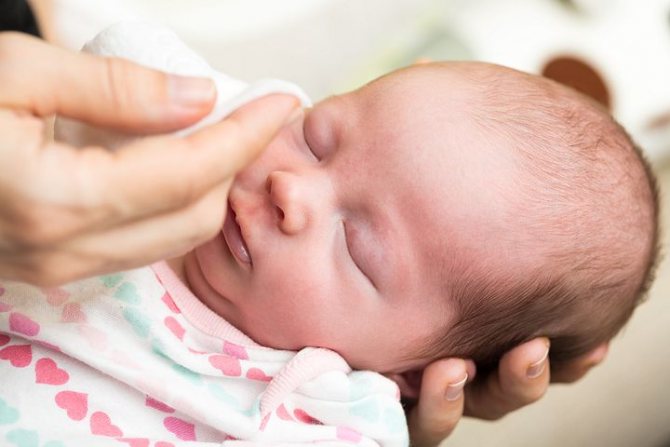
The finger you will use to massage the tear duct should be lubricated with baby oil or cream - this will help make it easier to glide over the skin and will not cause pain to the baby. Special attention should be paid to preparing the child for the procedure. The baby does not always understand what exactly is happening to him. And if you do a massage right away, at once, there is a risk of causing injury to the child - both physical and psychological.
First, the baby's eyes should be washed. An excellent solution for this would be chamomile decoctions, furatsilin solution, etc. You can sweep the eye with a cotton pad from the outer corner to the inner one. And you should definitely remember that one cotton pad per eye, otherwise you can spread the infection.
Massage of the lacrimal canal of the baby's eyes should be performed at least 5-10 times in a course over 2 weeks. When finished, be sure to show your child to a doctor. If the channel is not free, the massage will have to be done again.
Execution technique
It is advisable that the doctor at the clinic, having prescribed the procedure for you, shows you how to massage the eyes of a newborn. Do not forget that the baby has cartilage tissue instead of hard bones in the nose; perform movements very carefully.
If there is no possibility of a visual demonstration in the clinic, you can understand the technique of performing this procedure from the description below.
The first condition for successful implementation is sterility. During the massage, you should have perfectly clean hands. Trim your manicure to keep your nails short. You can wear sterile gloves that fit your hand.
Before starting the procedure, you need to imagine what the anatomical structure of the lacrimal canals looks like and where the lacrimal sac is located in the baby, which needs to be massaged.
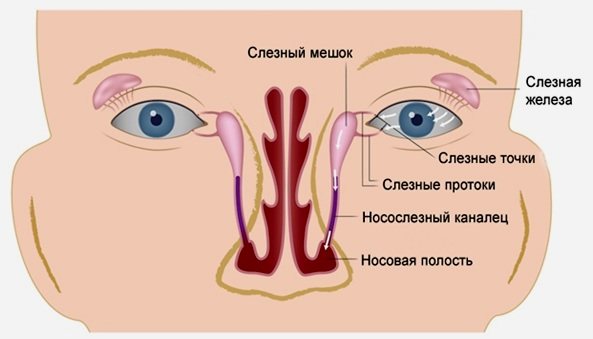
At the beginning of the procedure, the contents are very carefully squeezed out of the lacrimal sac. A warm solution of furatsilin is instilled into the eye. Using a sterile cotton swab, you will need to remove purulent or mucous discharge and begin the massage.
The pads of the fingers perform jerking and vibrating movements. Their direction should be from top to bottom from the inner corner of the eye, where the lacrimal sac is located along the nasolacrimal canaliculus.
The purpose of the movements is to break through the epithelial film in the tubule remaining after birth. During the period of intrauterine development, it protected against the penetration of amniotic fluid into the baby’s body. Now it interferes with the normal functioning of the lacrimal canaliculus.
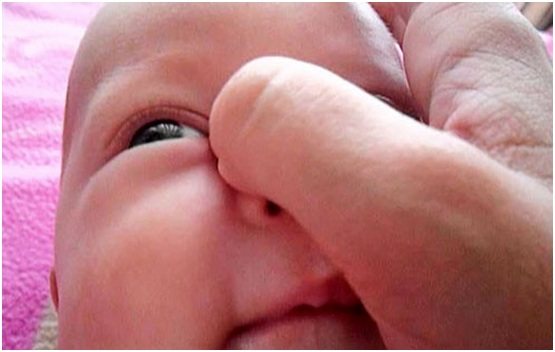
One cycle of eye massage consists of 11 movements. It is necessary to move the fingertips ten times with jerky movements, creating light pressure from top to bottom, and once with a vibrating movement - from bottom to top. After the massage, disinfectant antimicrobial drops prescribed by the doctor are instilled into the eyes.
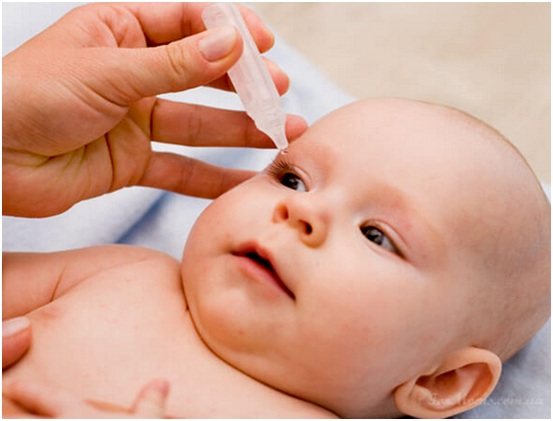
The frequency of the procedure per day should be five times. The duration of eye massage for a baby usually does not exceed two weeks.
Symptoms of blockage in newborns
Symptoms of tear duct obstruction in newborns:
- Profuse lacrimation without baby crying.
- Formation of purulent or mucous discharge in the corners of the eyes, on the eyelashes and conjunctiva.
- Sticking of eyelids after sleep.
- Swelling and redness of the eyelids.

Rules for diagnosing tear duct obstruction in infants
To establish obstruction of the lacrimal duct in newborns, several diagnostic methods are used:
- Testing using a fluorescent solution that is injected into the eyes. This solution is completely harmless and safe. After a certain time, the doctor examines the conjunctiva through a blue tint. If there is no paint, then the tear ducts are normal.
- The West test involves injecting a dye called collargol or fluorescein into the eye. In this case, the nose is covered with cotton swabs. After a certain period of time, the tampons are removed from the nose. If they stain within a maximum of 7 minutes, it means that the tear ducts are free.
- Dacryoscintigraphy refers to magnetic resonance imaging, but with the use of a dye.
- Probing is based on determining the location of the blockage.
- Testing to detect infection.
Contraindications
An infectious eye disease may be a contraindication to massage. Therefore, before undergoing the procedure, you should consult a doctor to make sure that the blockage of the tear duct is not caused by inflammation due to infection.
For example, phlegmon of the lacrimal sac, if not properly treated with medications, can lead to necrosis of the tissue surrounding the lacrimal sac.
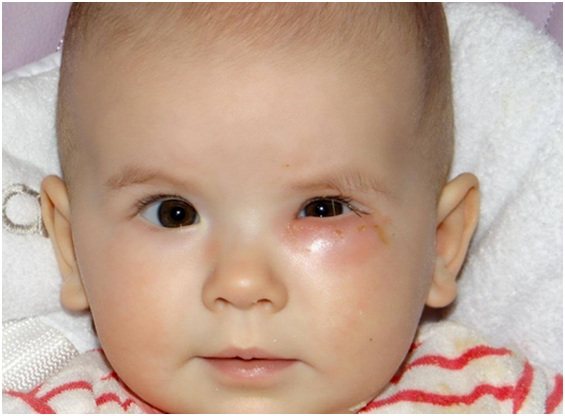
In advanced cases, as in the photo, you should also not massage yourself. Treatment should be carried out only in a clinic setting.
One of the complications of blockage of the lacrimal canaliculus may be hydrops of the lacrimal sac.
A painless swelling appears on the back of the nose, and the skin at the site of the lesion becomes thin.
There may be other contraindications, which the doctor will inform you about.
Additional information about massage
When obstruction of the lacrimal canal occurs in babies, massage is performed approximately 5 times daily . The course of treatment is usually 2 weeks.
If the procedures are carried out successfully, you can avoid such unpleasant consequences as canal probing.
It is necessary to massage the lacrimal canal very carefully so that the purulent contents of the lacrimal sac do not get into the ear or another healthy eye. The older the child, the denser the plug forms and the more painful the procedure itself will be.
If, upon completion of the full course of massage, the treatment has not brought the desired result, further continuation of the massage is considered inappropriate. In this case, the child is indicated for probing, in which the film is pierced. If this pathology is caused by disturbances in the development of the nasolacrimal duct or incorrect design of the nasal septum, the situation can be corrected only with surgical intervention, which is performed on the child no earlier than 6 years of age.
Rate this article
Loading…
- Related Posts
- When can you give water to a baby, during breastfeeding and bottle feeding?
- How to properly bathe a boy and a girl
- Washing things for newborn babies (Highlights)
lavage of the lacrimal canal in newborns
I will describe our experience in dealing with this scourge.
It all started in the maternity hospital. I read somewhere that in the states, all children, without exception, are given eye drops after birth to prevent conjunctivitis. We didn't do this. A day after giving birth, they came and asked if there was pus in the eyes. I said no, and again nothing was given to the baby. On the second day, pus appeared in the left eye, and we were given drops. She was discharged on the fourth day with a diagnosis of conjunctivitis.
When the patronage nurse came to us, she advised us to rinse the eye with furatsilin and instill Tobrex (an antibiotic) up to 5 times a day. We did just that, and after 10 days everything went away.
Then the baby suddenly began to relapse - at about 2.5 months. We went to see an ophthalmologist, and the baby was diagnosed with neonatal dacryocystitis (or inflammation of the lacrimal duct). The doctor prescribed the following:
1. Rinse the eye with furatsilin - as often as possible. Make the solution like this: 1 tablet per 100 ml of water. Renew the solution every day.
2. Vitabact drops (antibacterial) - drop into the eye, pushing back the lower eyelid. Up to 5 times a day.
3. Massage immediately after instillation. Massage for dacryocystitis is done as follows: 4 pressing movements on the inner corner of the eye (rather even on the side bridge of the nose), 4 massaging movements from the wing of the nose up to the inner corner of the eye. Repeat the entire cycle 4 times.
4. Ophthalmoferon. Up to 5 times a day.
5. Tobrex, “if there is any left, you can finish it” - that’s what the doctor told us, but we didn’t.
After 10 days of treatment, it was necessary to do a Collargol test. To do this, a cotton wick is inserted inside the nose, and a drop of collargol must be dropped into the eye. After 5 minutes, evaluate the result to see whether the wick is colored. If yes, the channel’s patency is excellent. If not, wait another 10 minutes and evaluate again. If it is colored, the passability is average. If not, then there is no cross-country ability either.
I did a test and nothing was colored. Then I decided to try it on the second eye (the healthy one) - and lo and behold, nothing was stained either. Then I decided to test it for myself - and my wick didn’t turn colored either. It turns out that everyone has chronic dacryocystitis? No, it’s quite difficult to simply perform this test, and it’s better to do it with a doctor.
It so happened that our ophthalmologist fell ill, and we continued treatment on our own according to the same regimen. When there was no effect even after a month, it became clear that we were facing surgery: probing the tear duct. We decided to go for a fee to an ophthalmologist at the Semeynaya clinic on Skhodnenskaya to finally make sure. The doctor is simply wonderful, Mishka was delighted with her. But most importantly, she showed us how to massage! It turns out that we pressed in the wrong place and too weakly! The next day, as if by magic, everything went away. Now almost a month has passed and everything is normal. There was no need to puncture, hurray!
